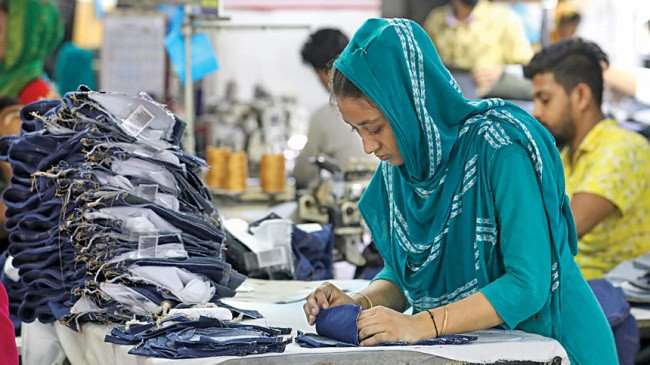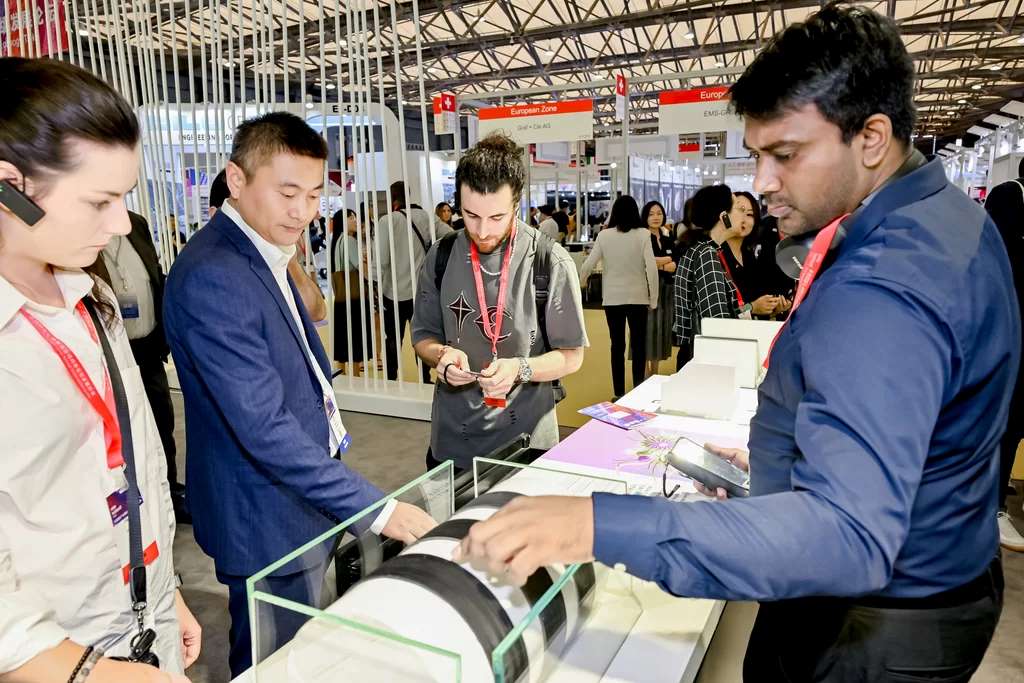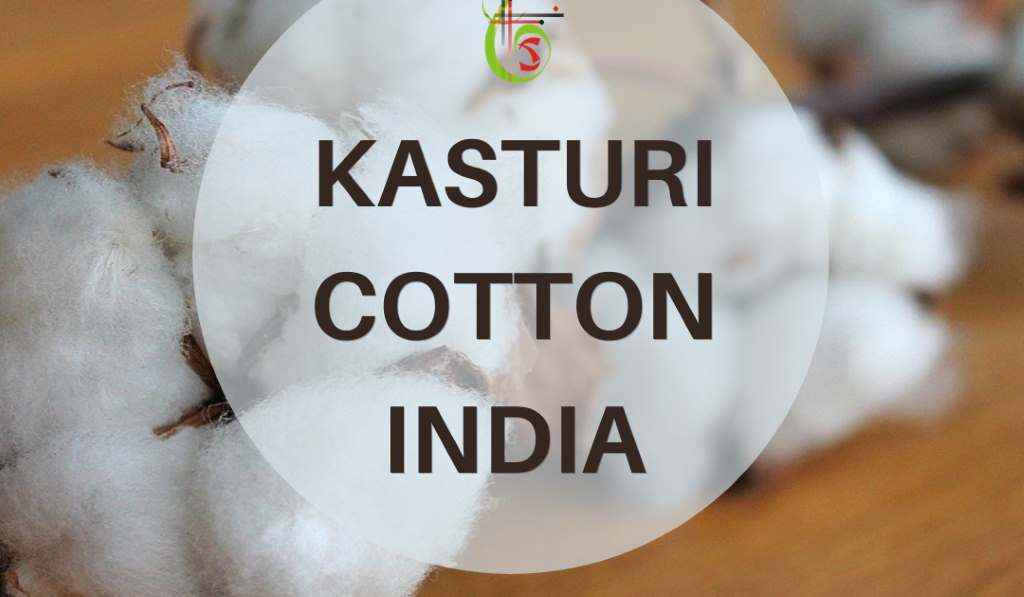FW
The textile industries of India and Vietnam can cooperate for mutual benefit. With its large population, India is a potential export market for Vietnam garment industry. Vietnam has a large Indian population with a high demand for fashion.
Despite achieving impressive growth in garment and textile exports, Vietnam relies heavily on imported raw materials. Vietnam’s main imports of textile products from India are polyester viscose and synthetic fabrics, polyester wool fabrics, and polyester filament yarn.
The Indian government has endorsed a credit program to promote India-Vietnam garment cooperation worth $300 million. Based on this program, the two sides are considering the establishment of the first Indian garment industrial zone in Vietnam. Indian businesses can concentrate their production lines with the best infrastructure system access, reducing production costs while supplying materials for Vietnamese enterprises with updated technology, best quality and highly competitive prices.
The credit package will not only help Indian businesses develop factories there but also stimulate Vietnamese companies to expand cooperation with Indian partners. The successful development of such a garment industrial zone will serve as a strong basis for the establishment of another industrial zone in Vietnam.
Germany-based flat knitting machine builder, Stoll, is keen to boost business of technical textiles such as footwear and will participate at Techtextil exhibition to be held in May. Booth C19 in Hall 3 in the exhibition will display Stoll’s products.
As per Stoll CEO Andreas Schellhammer, with the development of knitted football boots technology has shown its importance. A couple of years ago, no-one was talking about knitted sports shoes but look now at what the biggest two names in the industry are producing. There is a lot of hype and fantasy about what knitting machines can do but it’s important to find the products that can really offer commercial growth.
With a knitting width of 50 inches, the 3-system CMS ADF-3 continues to perform well in an intensely competitive market mainly due to these broad areas of applications. The CMS ADF-3 covers a gauge range from E 10 to E 18, including multi-gauge technology. The CMS ADF-3 is based on 32 motorized yarn carriers. These carriers move independently from the carriage and can position themselves vertically or horizontally. Positioning is controlled by the pattern programme with these configurations opening up almost unlimited possibilities for the user regarding patterns and color combinations. This makes CMS ADF-3 versatile.
When it comes to plating, the benefits of flexible yarn carriers are particularly noticeable as its inverse plating allows you to create any conceivable colour combination. With intarsia plating, color nuances can be added to individual or multiple pattern areas. The CMS ADF-3 also enables color fields of less than 1" to be knitted.
Stoll also highlights the machine’s efficiency, which is boosted by more effective knitting sequences that reduce the stroke. Faster retrofitting times when changing patterns lower the machine’s downtimes considerably. Even its ergonomic improvements have generated several benefits for the user who work with the machine on a daily basis.
The Stoll enterprise is the integrative link between the highly sophisticated technology in the area of developing and manufacturing flat knitting machines on the one hand and an innovative independent thinker and developer in the section of fashion and technology on the other hand.
Pakistan's textile and garments exports declined by 16.23 per cent in March 2015 compared with the previous year. Exports of cotton yarn declined 29.36 per cent in value and 12.99 per cent in quantity terms, followed by cotton cloth (14.45 per cent in value and 37.57 per cent in quantity terms), bed wear (16.94 per cent in value and 15.15 per cent in quantity terms), towels (19.03 per cent in value and 23.51 per cent in quantity terms), garments (5.20 per cent in value and 12.57 per cent in quantity terms), synthetics (24.87 per cent in value and 32.99 per cent in quantity terms) and made-us (13.62 per cent in value terms).
Knitwear is the only product having registered a 28.53 per cent growth in quantity terms but it has also declined by 7.41 per cent in value terms.
Pakistan’s textile industry has lost its comparative advantage to regional competitors on account of high cost of energy, finance and wages, technology and raw material disadvantages, system inefficiencies, opportunity cost of funds withheld by the government and zero investment incentives. Since textile mills have been closing down one after another, 30 per cent of the capacity across the textile value chain has been lost.
Monique Maissan, Founder and CEO of 'Vision Textiles', says the Chinese company is on an expansion drive in India as the initial reaction for products made from recycled pet (polyethylene terephthalate) bottles has been good in India, especially in the making of children’s school uniforms. The company is in discussion with possible investors to scale up business in the country. It’s also looking for partners.
Maissan further said that Vision Textiles, which sells garments under the Waste2Wear brand in India, is working with TARA looms in Delhi for setting up a new project – Waste2Weave in India. It is aimed at developing new fabrics and handloom techniques to empower women.
Directors of Vision Textiles (India operations), Rajvanti S and PT Mani, said that the company sources yarn from units located elsewhere in India, blends it with cotton or polyester for making the fabric and ultimately stitching the garment. They ensure that the yarn is made from recycled pet bottles.
The entire product range of Vision Textiles is displayed at the garment making unit at Kalapatti (Coimbatore) including sportswear, ladies dresses, upholstery and curtains.
Turkey denim manufacturer Orta Anadolo and Garmon Chemicals have joined forces to be the first in the industry to apply the GreenScreen chemical hazard screening methodology on denim fabrics. The two companies used the Amsterdam Denim Days event to make the launch. The pair have pioneered a breakthrough approach to a new breed of highly conscious denim materials.
GreenScreen for safer chemicals is a publicly available and transparent chemical hazard screening method developed by the NGO Clean Production Action to help society move quickly and effectively toward the use of greener and safer chemicals. It’s an assessing methodology purely based on toxicology and aimed at identifying safer chemicals.
Garmon wants to change the paradigm and believes that, in order to meet customers’ expectations, better insight into chemical formulations is needed, rather than focusing on which chemicals to restrict. The methodology has been adopted in different fields already, including electronics with Hewlett Packard and Sony, but this will be the first for the apparel industry, and for denim in particular.
Greenscreen is the biggest and the most demanding toxicology standard that is known in the world and it’s being put to fashion. Game-changing business transformations are starting to take place in the apparel industry. These changes are driven by an increasing pressure coming from public opinion asking the textile industry for a more ethical approach.
The garment sector's plan to grow to $50 billion by 2021 is crucial to the nation’s development goals, given the enormous contribution the RMG sector makes to Bangladesh’s economy and women’s empowerment, feels Marcia Stephens Bloom Bernicat, US Ambassador to Bangladesh. In her recent op-ed article ‘Rana Plaza Two-Year Anniversary’ she wrote the US is partnering with the government, workers, and employers to show the world that Bangladesh is working towards new standards for workers’ rights and safety, ensuring that no worker need fear such a tragedy again. She stressed that tragedies can and should lead to transformation. Workers, including thousands of young women employed for the first time, must be afforded the right to raise their concerns, be respected and work in safe conditions, the US diplomat said.
Emphasising the role of BGMEA and the government, Bernicat says they have a responsibility to ensure all factories allow inspectors’ access and that factories remediate the problems that are identified and these reforms will also increase productivity.
Encouraging the Bangladesh government, the US envoy hailed its achievement by saying that the government has registered over 300 unions and created a website for unions to register online. The government should ensure these unions’ members are able to exercise their legal right to collectively bargain, free from the fear that they will be fired or harassed, and that illegal retaliation will be dealt with quickly, she added.
Use of an alternative resolution system to prevent disputes between workers and management from escalating into conflict would be welcomed. The government will soon provide employers better guidance, help workers understand their role, and give Bangladesh authorities the direction to properly enforce the law, Bernicat said.
Seeking extension of the interest subvention scheme to entire textile sector, members of the Texpreneurs Forum met Union Ministers and officials. The eligible sectors for the scheme would be announced shortly, the Union government had announced.
Secretary of the forum Prabhu Damodaran, who led the delegation, briefed the Ministers and officials about the need to give coverage of the scheme to spinning mills sector as well. With Ebitda (earnings before interest, taxes, depreciation and amortisation) coming down, and a majority of mills registering huge losses, the spinning sector is going through a tough period, Damodaran said. This is because of factors like China reducing yarn imports from India, and investments made on capacity expansion before 2010 in mills gone waste.
The forum’s demand include making cotton and fabric eligible for Merchandise Exports from India Scheme under Foreign Trade Policy at least for exports to China and Bangladesh, and making the use of yarns and fabrics of Indian origin mandatory for permitting duty-free imports of apparels from Bangladesh.
Bangladesh has launched the Center of Excellence for the Bangladesh Apparel Industry (CEBAI), aimed at improving the productivity of the country’s readymade garments industry through research and development. It will create skilled and semi-skilled workers through market-responsive training or through providing support for skill development endeavors.
The center will also regularly conduct research on the industry to keep it on the right track of development and act as a think tank for the apparel industry. CEBAI is the first such center established in the world. It would act as an important catalyst for the industry’s growth through research and skill development programs. It will provide all sorts of training and skill solutions, basic, regular and product based research, professional consultation and new market developments.
Swedish SIDA and retailer H&M are funding $1.5 million for the first three years of the project to be implemented by ILO. The skill delivery wing will be set up at Ashulia while the research and planning cell will be at Dhaka University and other activities would be conducted at private enterprises.
CEBAI aims to produce 6,000 skilled workers in two years. For meeting the growing global demand and export targets, Bangladesh will need 3.5 million skilled and semi-skilled workers by the next seven years.
India's cotton exports are expected to fall by 29 per cent in the ongoing crop year. The country has exported only 4.5 million bales of cotton so far. Exports have slowed down due to higher global stockpiles and a sharp decline in demand from China.
Total cotton exports from India, the world’s largest producer and the second biggest seller, stood at 9.9 million bales in the last crop year. The record volume of cotton stocks has put downward pressure on international cotton prices. The Cotton Corporation of India, which procures cotton at government set price from farmers, has procured 8.69 million bales of cotton at the support price as against the target of nine million bales in the 2014-15 crop year.
Cotton procurement has been stopped now as domestic prices have improved and arrivals have also tapered down. Cotton prices have increased by Rs 1,000 to Rs 1,500 per candy. CCI is offloading cotton at different rates depending on variety. Since it is a huge quantity, the sale would continue up to September. The country’s total cotton production has been pegged at over 40 million bales in the 2014-15 crop year as against 39.8 million bales in 2013-14.
India and Canada have signed two different MoUs for skill development in the apparel sector. As per the MoU, Canada’s Fanshawe College will help impart training with modern quality methods to Indian trainers and in turn they would give training with new concepts to workers employed in the apparel, made-ups and home furnishing sectors in the country. This would result in the availability of a larger number of quality master trainers. This would further ensure quality training in the apparel sector.
Skill enhancement is considered necessary in the apparel sector mainly to reduce the rejection percentage. Imparting quality training with the latest concepts would help to enhance workers’ productivity levels, which is currently lower in India compared to its competing countries.
India hopes to conclude the Comprehensive Economic Partnership Agreement (CEPA) with Canada by September 2015. Exporters in Tirupur welcomed this and say the CEPA would provide a good opportunity in future to boost India’s apparel exports to Canada. In 2013-14, total knitwear garment exports from India to Canada stood at Rs 680 crores, with Canada being the eleventh biggest destination for Indian knitwear exports. In the first ten months of financial year 2014-15, Indian knitwear exports to Canada were valued at Rs 565 crores.












